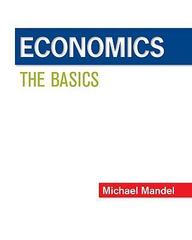Question
Problem 1 (Negative externality) Cigarette excise tax varies widely across states. For example, state cigarette tax is $1.36 in Indiana, $0.44 in North Dakota, and
Problem 1 (Negative externality) Cigarette excise tax varies widely across states. For example, state cigarette tax is $1.36 in Indiana, $0.44 in North Dakota, and $4.35 in New York. Sometimes local excise taxes are added to the state taxes, so in NYC with $1.50 per pack local tax added, the total tax per pack amounts to $5.85. (The highest such combined state-local tax rate is found in Chicago, IL at $7.16 per pack.)
expatistan.com reports a price of $14 per (Marlboro) package in NYC (as of Nov/9/2021). Assume this price includes the combined state-local tax of $5.85. Assume the demand for cigarettes in NYC is given by =17.80.2 and supply is given by =2 1.3. (Price is measured in USD, quantity in millions of packs per month.)
a. If cigarettes production (the supply curve) looks the same everywhere, what do you think the lower excise cigarettes tax in some states suggests about the elasticity of demand?
b. Assuming there are no negative externalities to smoking, what would be the perfectly competitive amount consumed and the price in equilibrium, without the tax?
c. What is the currently consumed quantity and price (for consumers, and for producers) with the current tax of $5.85? What are the government tax revenues, and what is the caused DWL? "It's worse to breathe it than to smoke it": Secondhand smoke beliefs [...] in the United States (Int. Journal of Environmental Research and Public Health, 2020, 17(22): 8630.) Smoking actually has a massive negative effect on public health, not only on smokers but also on those surrounding them (secondhand smoke effects).
d. Assuming the marginal external cost (MEC) is linear of the form: =, and assuming that the tax imposed by the government ($5.85) is the right tax rate: in that, it results in a socially optimal amount of cigarettes consumed; find the following:
, the DWL that would have been caused by the negative externality (smoking) in a perfectly competitive market without government intervention (the levels found in (b)); the total external cost that the government saved by limiting the quantity of cigarettes (using the excise tax). [Hint: If the tax is the optimal one then MSC should intersect the demand curve exactly at the current price-consumption levels with the tax imposed; using that point you can identify MSC and MEC]
Step by Step Solution
There are 3 Steps involved in it
Step: 1

Get Instant Access to Expert-Tailored Solutions
See step-by-step solutions with expert insights and AI powered tools for academic success
Step: 2

Step: 3

Ace Your Homework with AI
Get the answers you need in no time with our AI-driven, step-by-step assistance
Get Started


